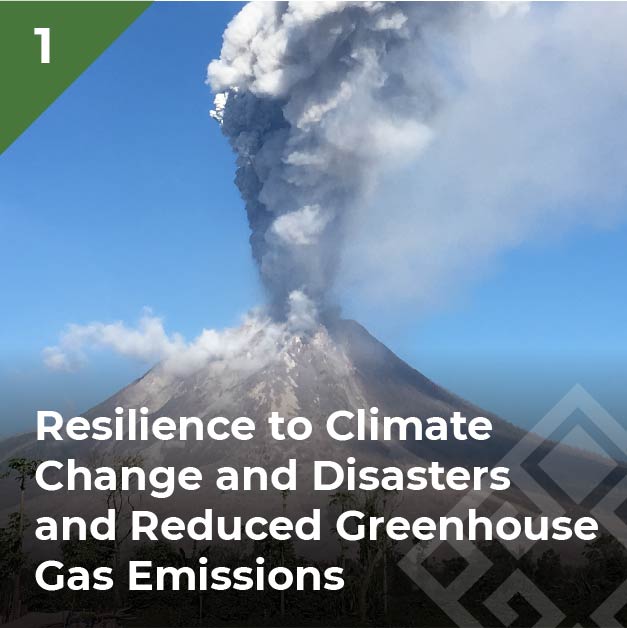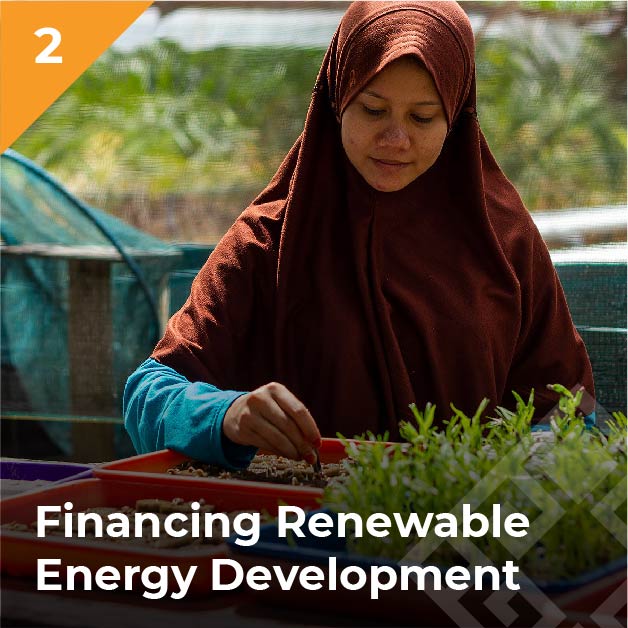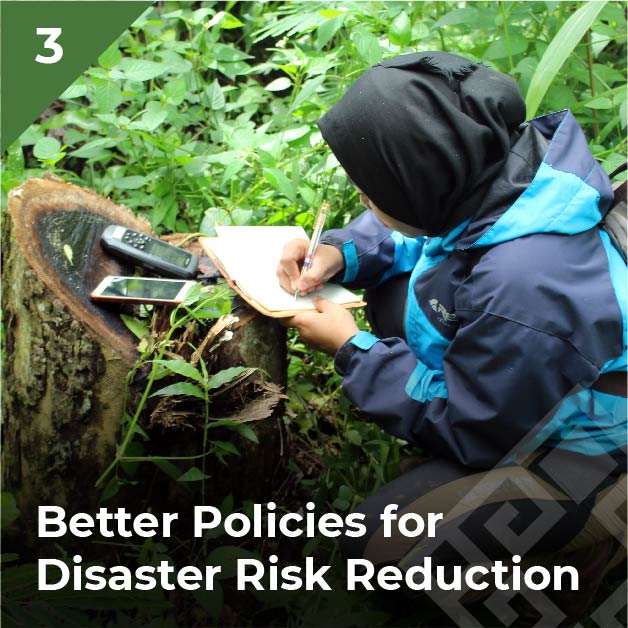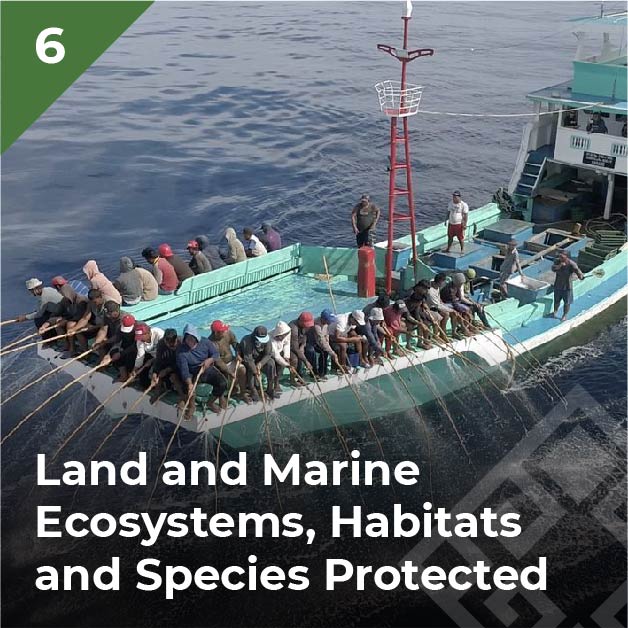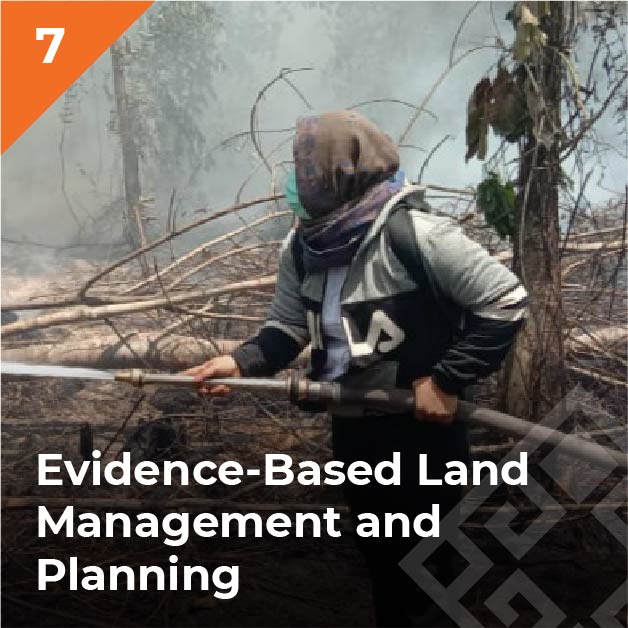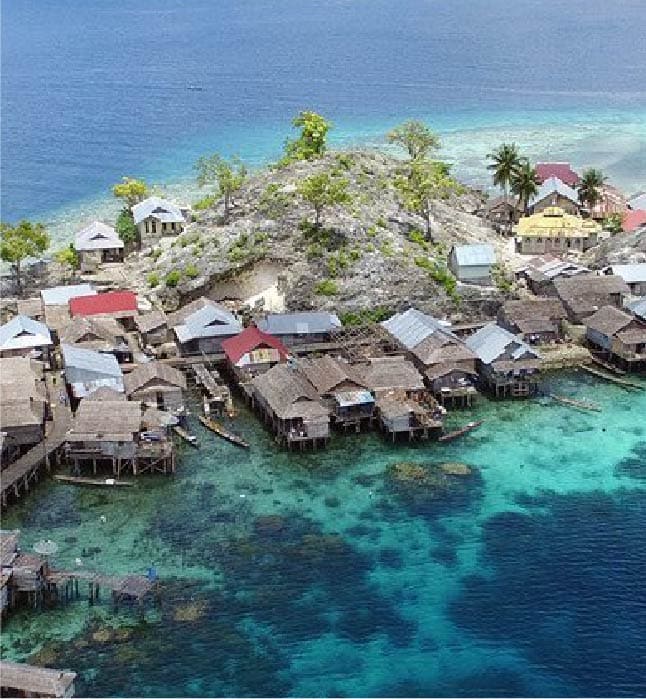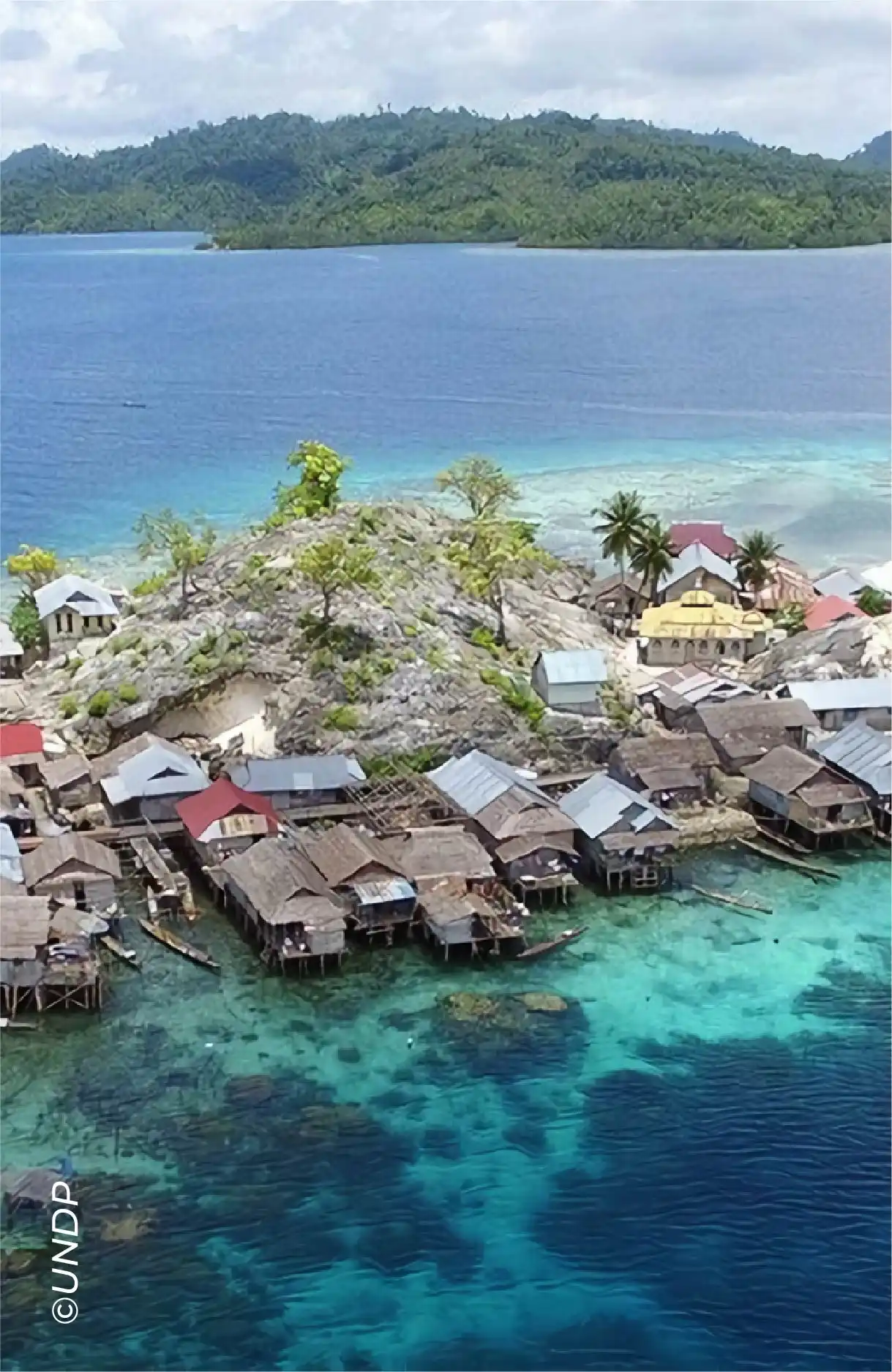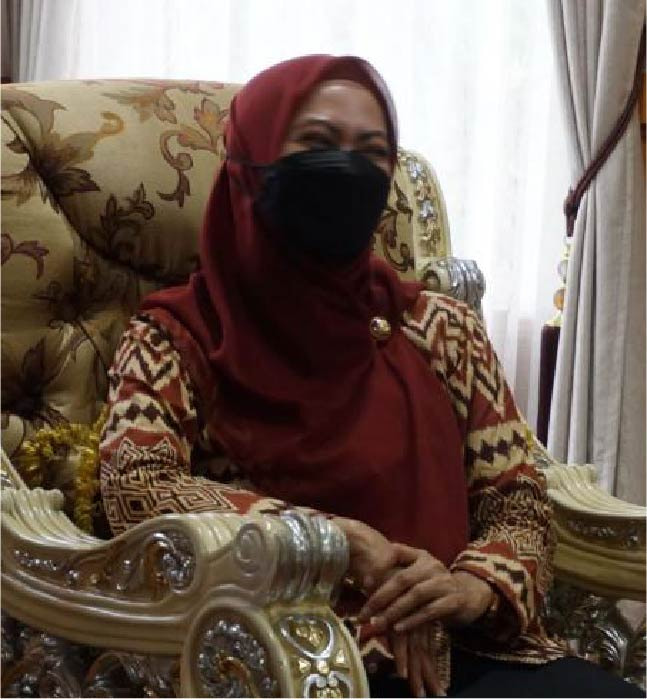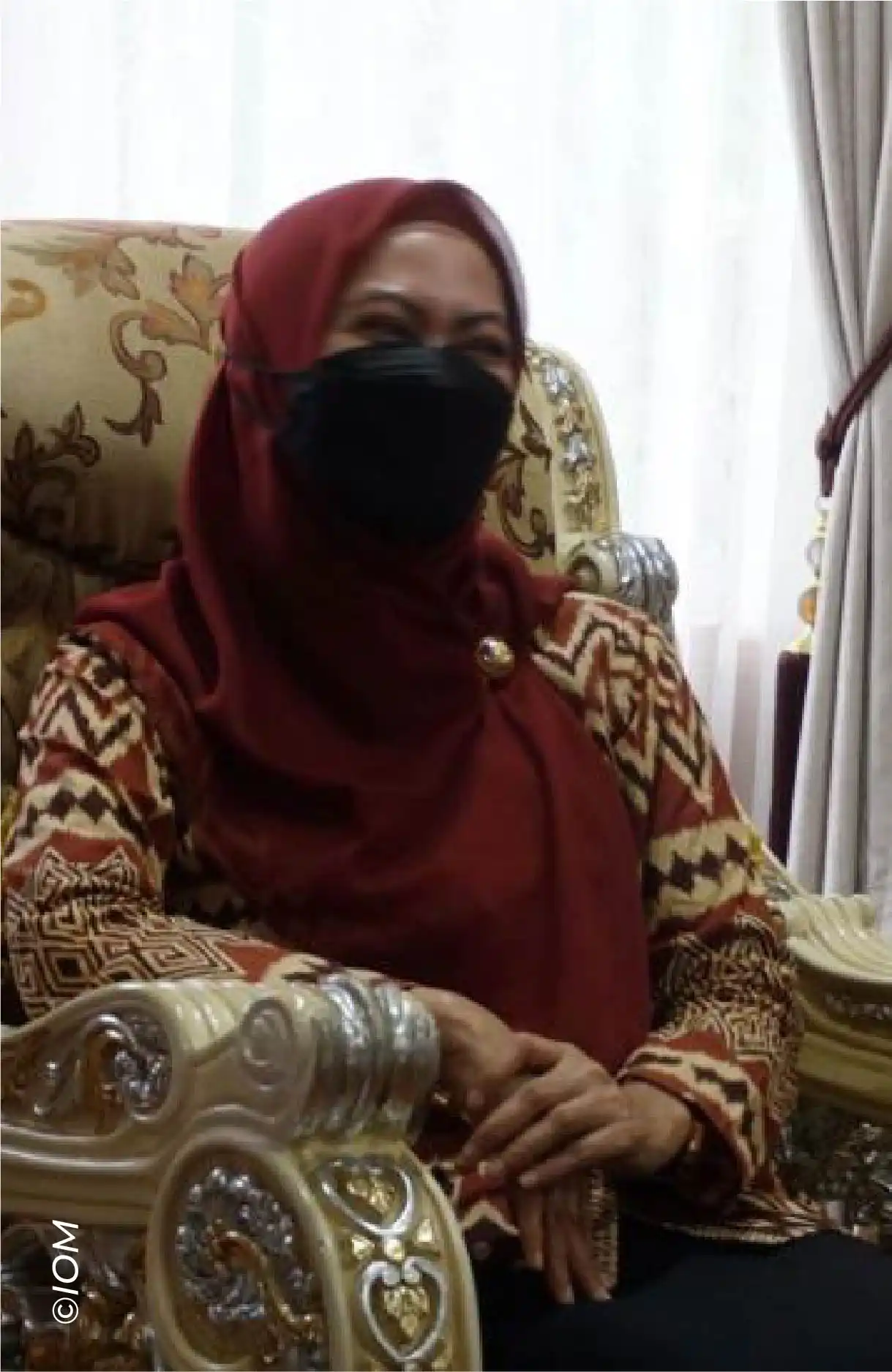United Nations In Indonesia
Country Results Report 2021
Green Development, Climate Change and Natural Disasters



On October 29, 2021, the day COP26 kicked off in Glasgow, Indonesia’s President Joko Widodo issued a Presidential Regulation setting out the country’s framework for action on climate change and stipulating policies for the preparation of mitigation activities to reduce carbon emissions.
The declining rate of deforestation in Indonesia serves as proof of the success of the government’s recent forest management initiatives, including a 2019 moratorium that tightened the implementation of laws on illegal logging and other damaging activities. As a result, Indonesia’s annual deforestation rate has fallen for four consecutive years, to 119,100 hectares in 2020. The country is now on track to meet one requirement of the Nationally Determined Contributions which targets a 29% reduction in greenhouse gas emissions by 2030. Through the UN’s KALFOR Project, the UN is helping to conserve an additional 44,490 Ha of land through non-forest area protection governance, which entails the mitigation of 16,138,427.17 tons of CO2e emissions.
The Ministry of Environment and Forestry (MoEF) and the UN have also been working together to advance the haze-free and sustainable peatland management agenda in Indonesia for over a decade—in part funded by the Global Environment Fund (GEF). Another UN–MoEF peatland-focused partnership facilitated the installation of two peatland hydrology units that cover about 5% of Indonesia’s total peatland in 2021. The hydrology units are responsible for saving almost 20 million tCO2e of greenhouse gas emissions. Their capacity to make water available for agriculture and render peatland less vulnerable to degradation and fires benefitted 7,326 people directly and a further 22,000 indirectly.
The blistering pace of economic development over the past decade has lifted millions of people out of poverty in Indonesia, but it has also increased demand for energy. Today, some 30 million people lack adequate access to electricity. If Indonesia is to deliver on phasing out coal-fired power stations, it urgently needs more clean energy and more efficient ways to make use of its generation mix.
A UN project called ADLIGHT is helping Indonesia transition to more energy-efficient lighting technologies, a process that could end up saving up to 250,000 tons of CO2 eq in greenhouse gas emissions. Another project that focuses on transforming Indonesia’s energy sector, called MTRE3, contributed to more than half a million people living in rural areas being able to access electricity generated from renewable energy sources by the end of 2021.
Situated along the Pacific Rim of Fire, Indonesia is one of the world’s most disaster-prone countries. In 2021, some 3,034 disasters impacted 8.3 million people, according to Indonesia’s National Disaster Mitigation Agency. Like COVID-19, disasters set back the 2030 Agenda and exacerbate pre-existing inequalities.
UN interventions throughout 2021 enhanced cross-sector coordination between government and local civil society organizations to prepare for and respond to disasters. That included the establishment of new provincial logistic clusters in Central Java and South Sulawesi. The UN also implemented disaster risk reduction strategies for six villages, that centre on 12 tsunami-ready indicators and ran capacity building seminars for 1,303 health practitioners and government officials on how to ensure the availability of contraceptives during crises, including the COVID-19 pandemic.
The speed at which COVID-19’s Delta variant tore through Indonesia in summer 2021 and the emergence of the Omicron variant in December underscores the need for continued vigilance to halt the spread of the pandemic. But scientists are clear COVID-19 will not be the last pandemic the world faces—and governments must build on the lessons of 2020 to ensure they are prepared for the next outbreak. In 2021, the UN collaborated with the Ministry of Health in 2021 on the development of a training module to strengthen public health emergency preparedness capacities at hospitals and community health centres, and to mitigate the risk of the emergence or re-emergence of high-threat pathogens. This included extensive support of the Ministry of Health’s contact tracing capacity, including on-the-job training for staff across 19 provinces on the use of a digital tracing application that resulted in 35,000 people being registered as contact tracers. The UN also supported the establishment of a zoonosis information system for the Ministry of Health, covering priority zoonotic diseases such as avian influenza, leptospirosis, rabies, anthrax, and Nipah virus.
Rapid industrial development and population growth have put Indonesia’s incredible biodiversity at risk, but the UN is working with the Government to ensure that raising living standards for Indonesia’s human population does not come at the expense of the more than 300,000 wildlife species that also call the archipelago home.
A UN project to combat the illegal trade in endangered species led to the development of Indonesia’s first-ever national strategy to combat illegal wildlife trafficking in 2021, which is now awaiting legalization. In 2021, Indonesia successfully initiated the implementation of four new UNESCO-designated sites—all based on the principles of integrated land and seascape planning.
